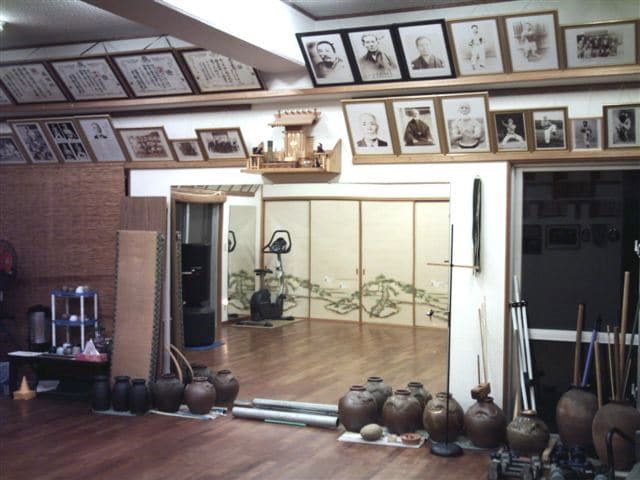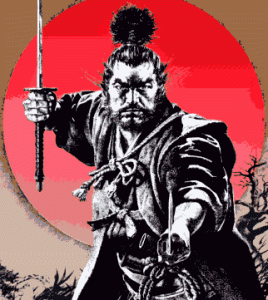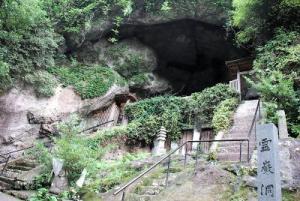by Howard Webb

It is commonly believed that Grandmaster Shigeru Nakamura founded the Okinawa Kenpo Karate and Kobudo system; this is an erroneous belief. The martial art that we call Okinawa Kenpo migrated from China to Okinawa in the 7th Century. Then known as Kempo, it was taught only to members of the Okinawan Royal family, until, 1472 AD. In that year, Naha Bushi Sakiyama agreed to accept students outside of the Royal family. To ensure the lineage of the system’s grandmasters would stay within his family, he developed a scroll to document each successive grandmaster. In 1925, Shigeru Nakamura become the 10th grandmaster listed on the Sakiyama scroll and head of his family’s martial art. At this point in time, the Nakamura family’s karate system was known as Tomari-Te (tay). The Nakamura Family’s system of karate is the oldest documented style of Okinawan karate. And the Sakiyama scroll is the only ancient Okinawan karate artifact to survive the U.S. invasion of Okinawa during WWII.
Without getting to far into the weeds of Okinawa Kenpo history, in the early 1920’s, Shigeru Nakamura became upset with the Japanese for two reasons. First, the Japanese government had placed a prohibition on karate dueling to the death. This ban greatly disturbed Grandmaster Nakamura, who had participated in many duels. Shigeru publicly denounced the ban, arguing that “If there is no full-contact dueling, then effective combat techniques will be replaced with ineffective ones.” The second reason for his ire, the Japanese had high-jacked their native martial art, turned it into a sport (like Judo), and proclaimed it a Japanese martial art. His strategy for countering, what he perceived as a Japanese assault on Okinawan karate, was to unite all the schools of Okinawan karate under one style designation, and that designation was “Okinawa Kenpo.” Henceforth, Grandmaster Nakamura co-founded the Okinawa Kenpo Remmei (league) as an Okinawan karate umbrella organization.
In 1969, Shigeru Nakamura passed away. The result of his passing, organizationally, was the disintegration of the Okinawa Kenpo Remmei. However, before his death, Grandmaster Nakamura designated Okinawa Kenpo to be the official title of his family’s martial art.
To honor Grandmaster Shigeru Nakamura and promote his family’s martial art, on April 1, 2019, the Okinawa Kenpo Karate and Kobudo Association (founded in Okinawa) and Grandmaster Taketo Nakamura’s Okinawa Kenpo karate and Kobudo Remmei, in a joint venture, founded the Shigeru Nakamura Ryukyu Martial Arts Institute as their organizations’ educational platform.

In the decades after Shigeru Nakamura’s death, in the United States, Okinawa Kenpo Karate and Kobudo evolved into an Americanized form of karate. As a result, the Institute’s mission is two-fold: First, re-establish the original Nakamura’s family’s martial art as Okinawa Kenpo Karate and Kobudo in the United States and to instruct and practice Okinawa Kenpo as Grandmaster Shigeru Nakamura mandated it. Second, to provide everyone, who desires it, an opportunity to learn and study Nakamura Okinawa Kenpo Karate and Kobudo, regardless of their financial status and/or geographic location. In Okinawa there is a saying: “All karate sensei have full-time jobs.” As this saying implies, Okinawan karate is an art to be shared – not commercialized, and as a result, only offered to those who have the financial means to pay for commercially priced instruction. Moreover, there are places in rural areas of the United States (and in other countries) where the people do not have access to martial arts instruction.
It is for these reasons that the Nakamura Institute offers on-line, video, classes through the Patreon, video streaming, channel for five dollars per month for private lessons and ten dollars per month for group lessons. Currently, we offer private lessons for teen/adults and separate private lessons for seniors. In October, we will have our group lessons on-line. And by December, we will have private lessons available for childern, we call them Wee-Warriors. Our lessons are available on our Patreon channel: patreon.com/nakamura_institute
To preview our educational content and training programs, we have sample presentations on two YouTube channels: Nakamura Institute (for videos, less than fifteen minutes) and Howard Webb ACCJT (for videos longer than fifteen minutes). We have no idea why YouTube has placed a time-limit on the Institute’s channel. For more information about the Shigeru Nakamura Ryukyu Martial Arts Institute, go to our website – www.nakamurainstitute.net
I hope you will take advantage of our training opportunities, regardless of your martial art or skill level. I look for to training with you. Train hard and often.

Howard Webb
Howard Webb is a nationally and internationally recognized criminal justice liability management and use of force expert, who authored the four‐hundred and four page liability management and use of force treatise: MANAGING THE USE OF FORCE INCIDENT For Officers, Supervisors, and Administrators. Howard’s textbook and his proactive liability management and use of force training program has been adopted by national and international criminal justice agencies and police academies as an effective solution to their civil litigation challenges, media relations difficulties, and Department of Justice civil rights investigations.









